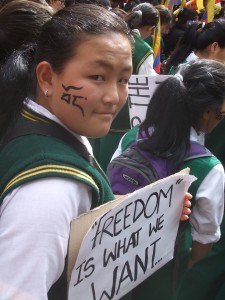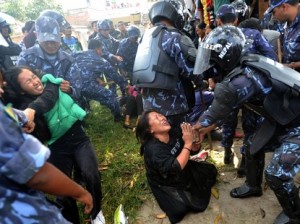On March 12, the Tibetan Women’s Association (TWA) commemorated the 54th anniversary of the National Tibetan Women’s Uprising. On this day in 1959, thousands of Tibetan women peacefully protested against Chinese occupation of Tibet in Lhasa. The authorities responded with force, resulting in deaths, torture and many arrests.
The commemoration honoured not only those who lost their lives in this brutal crackdown but all past Tibetan female martyrs. This included leaders of the march who were massacred in 1966 east of Sera Monastery and the fourteen female self-immolators.
Hundreds of Tibetan women, including nuns, school girls and laywomen as well as foreign supporters took part in the function held at the Martyrs’ Pillar in Dharamshala.
Addressing the crowd, TWA president Kirti Dolker Lhamo condemned China’s ‘brutal policies of bloodshed and provocation in Tibet’ and urged the UN to do intensive research on the actual causes of self-immolation. A new scholarship for female Tibetan students was announced and four books were released including translated editions of Jamyang Kyi’s ‘A Sequence of Tortures.’ Protestors then marched downhill to lower Dharamshala, chanting and raising banners.
Coinciding with the uprising, TWA organised a three day-long campaign in Delhi – ‘Tibetans stand together in Joy and Sorrow’ – which included a prayer meeting, women’s peace rally, silent protest, and all-women lobby campaign. On the first day, media attention was drawn to the campaign when a group of 13 Tibetan female students of Delhi University stormed the Chinese Embassy. In t-shirts with pictures of self-immolators they locked themselves together and shouted for China to ‘get out of Tibet.’
As part of their effort to ’empower Tibetan women to stand shoulder-to-shoulder with their male counterparts in society’, this month TWA also organised a 7-day leadership training course for nuns. ‘There is scope for nuns to be politicians and to be literary masters’ said Geshe Tharchin, member of the CTA. ‘It is important to participate in street protests but education is the best weapon we can use in the long run.’
(Sources: Phayul, TWA Press Release, Hindustan Times)






 Print
Print Email
Email